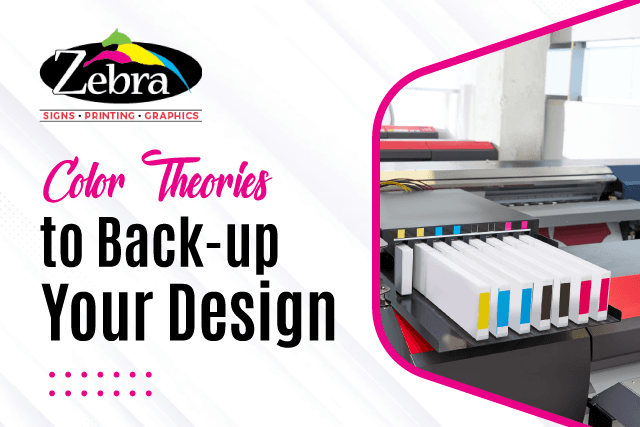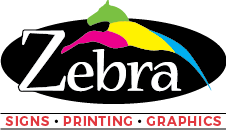
Color is an essential component of design. It can evoke emotions, set moods, and communicate messages. In the world of printing services, color plays a crucial role in creating effective and engaging designs for posters, window graphics, and backlit poster displays. In this blog, we will explore some color theories that can help back-up your design and make it stand out.
Color Psychology: Understanding the Emotions Behind Colors
Color psychology is the study of how colors affect human emotions and behavior. Different colors can evoke different emotions, and understanding these emotions can help you choose the right colors for your designs. For example, blue is often associated with calmness and trust, while red is associated with energy and passion. When designing a poster or window graphic, consider the emotions you want to evoke and choose colors that reflect those emotions.
Color Harmony: Finding the Right Combination of Colors
Color harmony is the concept of combining colors in a way that is pleasing to the eye. There are different types of color harmonies, including complementary, analogous, and triadic. Complementary colors are opposite each other on the color wheel and can create a striking contrast. Analogous colors are next to each other on the color wheel and can create a harmonious and cohesive look. Triadic colors are evenly spaced on the color wheel and can create a vibrant and dynamic design. When choosing colors for your design, consider the color harmony you want to achieve.
Color Contrast: Making Your Design Stand Out
Color contrast is the difference between two colors. High contrast can create a bold and attention-grabbing design, while low contrast can create a subtle and sophisticated look. When designing a poster or window graphic, consider the level of contrast you want to achieve. High contrast can be achieved by pairing complementary colors, while low contrast can be achieved by pairing analogous colors.
Color Temperature: Setting the Mood with Warm and Cool Colors
Color temperature refers to the perceived warmth or coolness of a color. Warm colors, such as red, orange, and yellow, can create a sense of energy and warmth. Cool colors, such as blue, green, and purple, can create a sense of calmness and relaxation. When designing a backlit poster display, consider the color temperature you want to achieve. Warm colors can create a sense of excitement and energy, while cool colors can create a sense of tranquility and relaxation.
Color Saturation: Choosing the Right Intensity for Your Colors
Color saturation refers to the intensity or purity of a color. Highly saturated colors are bold and vibrant, while desaturated colors are muted and subdued. When choosing colors for your design, consider the level of saturation you want to achieve. Highly saturated colors can create a dynamic and energetic design, while desaturated colors can create a more subdued and sophisticated look.
Color Symbolism: Communicating Messages with Colors
Color symbolism refers to the meaning or cultural significance of different colors. Different cultures and societies have their own unique associations with colors, and understanding these associations can help you communicate your message effectively. For example, in Western cultures, white is often associated with purity and innocence, while in many Asian cultures, it is associated with mourning and death. When designing a poster or window graphic, consider the cultural associations with different colors and choose colors that resonate with your audience.
Color Accessibility: Making Your Design Inclusive
Color accessibility is the practice of designing with color in a way that is inclusive of all individuals, including those with color vision deficiencies. When designing a poster or window graphic, consider the contrast and brightness of your colors to ensure that they are easily distinguishable for individuals with color vision deficiencies. You can also use textures, patterns, and other design elements to enhance the legibility of your design.
Color Trends: Staying Up-to-Date with the Latest Color Trends
Color trends refer to the popular color palettes and schemes that are currently in vogue. Keeping up-to-date with the latest color trends can help you create designs that are fresh and modern. You can use online resources such as Pantone or Adobe Color to stay informed about the latest color trends and incorporate them into your designs.
When it comes to poster printing services, window graphic printing services, and backlit poster display printing services, color is a critical component that can make or break your design. By understanding color theory and applying it to your designs, you can create effective and engaging designs that resonate with your audience. So, take the time to experiment with different color palettes, schemes, and combinations to back-up your design and make it stand out.
